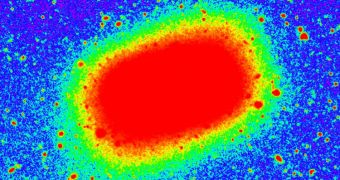At a distance of only 70 million light-years from Earth, in a group containing some 250 galaxies, an international team of astronomers featuring experts from Finland, Germany, Switzerland and Australia was recently able to discover a rectangle-shaped galaxy.
According to the researchers, this rare square galaxy bears an uncanny resemblance to an emerald-cut diamond. Finding such as structure is out of the ordinary. Usually, galaxies look like spirals, barrels, spheres, disks or lumps of star, but never like a rectangle.
Associate professor Alister Graham, a member of the research team who is based at the Swinburne University of Technology, says that the force of gravity and the spin of galaxies should not allow these formations to develop in such unusual shapes.
The expert says that, while there is no law of physics to dictate that the object should not exist, no one expected such a shape to endure in space. “It's one of those things that just makes you smile,” he says.
“It's a little like the precarious Leaning Tower of Pisa or the discovery of some exotic new species which at first glance appears to defy the laws of nature,” the investigator goes on to explain.
The image revealing the galaxy was collected by Subaru, the 8.2-meter flagship telescope of the National Astronomical Observatory of Japan (NAOJ). The instrument is located within the boundaries of the Mauna Kea Observatory, in Hawaii.
“One possibility is that the galaxy may have formed out of the collision of two spiral galaxies,” says one of the coauthors for the new study, Swinburne professor Duncan Forbes. The object may in fact look like an inflated disc, seen side on.
Subsequent observations, conducted using the massive Keck Telescope, revealed a rapidly-spinning, thin disc, with a side-on orientation, near the core of the rectangular galaxy. This disk may be rotating at velocities exceeding 100,000 kilometers (60,000 miles) per hour.
“While the pre-existing stars from the initial galaxies were strewn to large orbits creating the emerald cut shape, the gas sank to the mid plane where it condensed to form new stars and the disc that we have observed,” Forbes concludes.
A paper detailing these results has been accepted for publication in an upcoming issue of the esteemed Astrophysical Journal.

 14 DAY TRIAL //
14 DAY TRIAL //